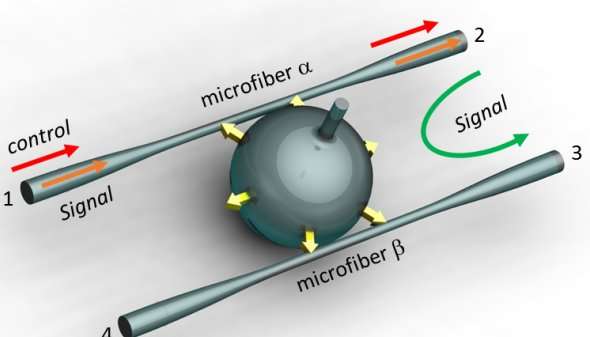Team develops optically controlled, non-reciprocal multifunctional photonic devices

The USTC Microcavity Research Group in the Key Laboratory of Quantum Information has perfected a 4-port, all-optically controlled non-reciprocal multifunctional photonic device based on a magnetic-field-free optomechanical resonator. This achievement is published in Nature Communications .
Light has bidirectional transmission reciprocity in common dielectric materials. Breaking this reciprocity in the direction of light transmission is of great significance in classical and quantum information processing. Optical circulators, isolators and directional amplifiers are examples of non-reciprocal devices. Yet the most common optical non-reciprocal devices are based on Faraday effects using magneto-optical materials, which are difficult to integrate on-chip. Therefore, in recent years, interest has increased in realizing on-chip, all-optical non-reciprocal devices.
In 2016, DONG Chunhua's group experimentally demonstrated the optomechanically induced non-reciprocity in a whispering gallery mode microcavity. On this basis, the group used a single cavity coupled with dual waveguides to implement a four-part versatile photonic device, including the functions of narrow-band filter, 4-port optical circulator and directional amplifier. The function mode can be switched arbitrarily by changing the control light.
For the circulator, the signal light incident from the ports 1, 2, 3 and 4, exits from the ports 2, 3, 4 and 1, respectively, constituting a 1-2-3-4-1 circular path. When only focusing on ports 1 and 2, it is also an efficient optical isolator; for directional amplifiers, signal light incident from port 1 is amplified and exits from port 2, not the other way around. Thus in the direction of 1-2 has directional amplification. The demonstrated device can even realize optical circulators with single-photon level and can be generalized to microwave and acoustic circuits.
More information: Zhen Shen et al, Reconfigurable optomechanical circulator and directional amplifier, Nature Communications (2018).
Journal information: Nature Communications
Provided by University of Science and Technology of China




















